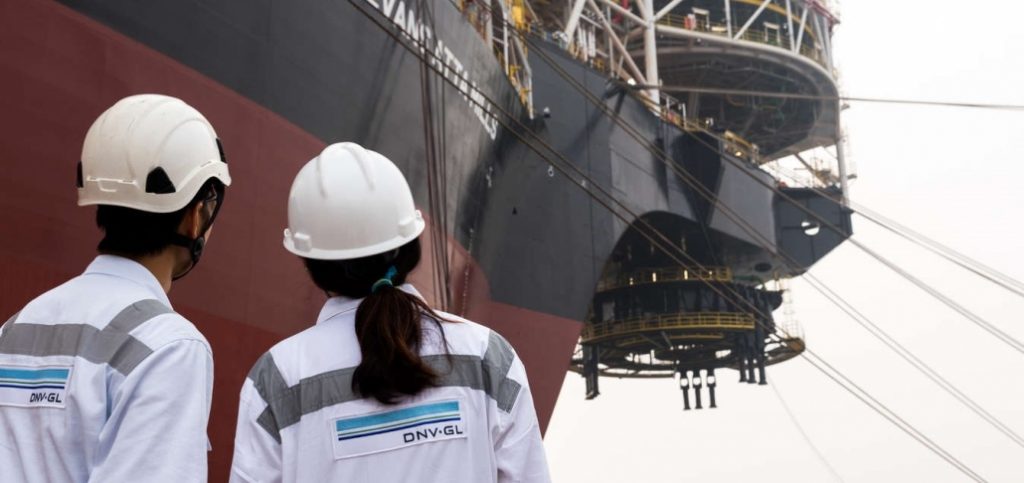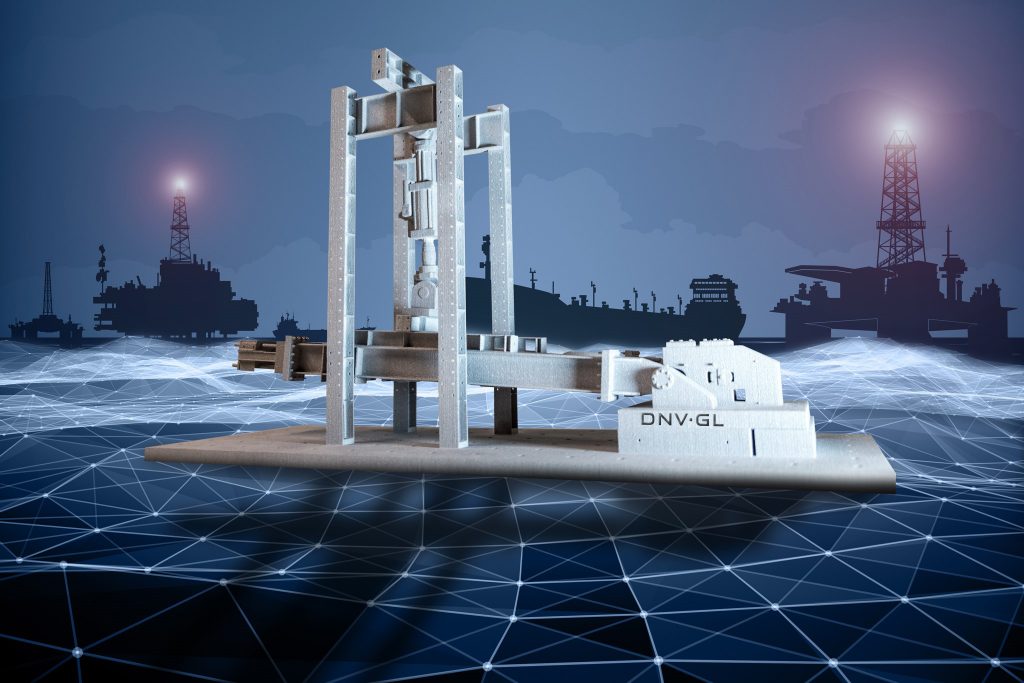DNV GL, a global certification and risk management firm, has released a new 3D printing service specification document aimed at supporting additive manufacturing in the oil and gas industry.
Specification DNVGL-SE-0568 defines DNV’s additive manufacturing qualification scheme and provides details on how to obtain and retain a number of the company’s 3D printing-related certificates. This includes certificates that endorse facilities and digital manufacturing services, and certificates that qualify manufacturers, build processes, 3D printers, parts, and personnel.
The document was developed in accordance with industry standard DNVGL-ST-B203, which DNV previously created for metallic components in the energy sector. As such, the specification is ultimately intended to help the industry in adopting metal 3D printing in a safe and efficient manner.
Brice Le Gallo, Regional Director of Energy Systems (APAC) at DNV, explains, “The DNVGL-SE-0568 service specification will ensure that safety and quality standards for additively manufactured parts are confirmed, in order to build trust within the supply chain and to gain the support and buy-in of end users.”

Unlocking the benefits of additive manufacturing
In the context of the energy sector, the adoption of 3D printing can help in avoiding long and costly production shutdowns, while also reducing the overall carbon footprint of supply chains. With more localized digital manufacturing networks, transportation costs and lead times can also be significantly slashed, bolstering energy firms’ bottom lines. According to DNV, building trust in 3D printed parts is a crucial aspect in unlocking these benefits.
Le Gallo adds, “To enable additive manufacturing technology’s widespread use and help it to fulfil its potential in disrupting operations and maintenance in industry, there needs to be a greater level of confidence in the products required in its ongoing use.
Backed by years of experience in new technology qualification, DNV recognizes the importance of taking a systematic approach to risk management. By releasing service specification DNVGL-SE-0568, the company is providing 3D printing supply chains with assurance that additive manufacturing systems will meet the highest standards of reliability and quality. The document is also expected to build trust in the materials used to 3D print industrial parts, an area that has historically invoked concern in stakeholders.

Standardizing 3D printing since 2014
DNV first started investigating 3D printing and its industrial benefits back in 2014, and published its first additive manufacturing guideline for the maritime, oil, and gas industries in 2017.
A year later, the company established a Global AM Centre of Excellence (CoE) in Singapore, which is now supported by the Singapore Economic Development Board (EDB). With the aim of advancing competence in 3D printing qualification, certification, and training, the CoE has taken on the role of an R&D hub for additive manufacturing in the heavy industrial sectors. With the release of specification DNVGL-SE-0568, DNV is revisiting one of the core commitments it made when launching the CoE.
Still, it isn’t the only organization providing guidance in the hopes of seeing additive manufacturing flourish. Just last month, Oak Ridge National Laboratory (ORNL), together with additive manufacturing data specialist Senvol, published a technical report on pedigreed data collection for industrial 3D printing. Resulting from a two year R&D agreement between the partners, the findings provide information on how to generate pedigreed data on the effects of certain process parameters during L-PBF.
Elsewhere, industrial standards organization ASTM International also recently published a journal on how the COVID-19 pandemic has affected various areas of advanced manufacturing. The document is intended as a source of thought leadership for post-COVID production, providing guidance on possible actions from a practical standpoint.
Subscribe to the 3D Printing Industry newsletter for the latest news in additive manufacturing. You can also stay connected by following us on Twitter and liking us on Facebook.
Looking for a career in additive manufacturing? Visit 3D Printing Jobs for a selection of roles in the industry.
Featured image shows a 3D printed aluminum replica of a mooring chain testing bed at DNV’s lab in Bergen. Image via DNV GL.



